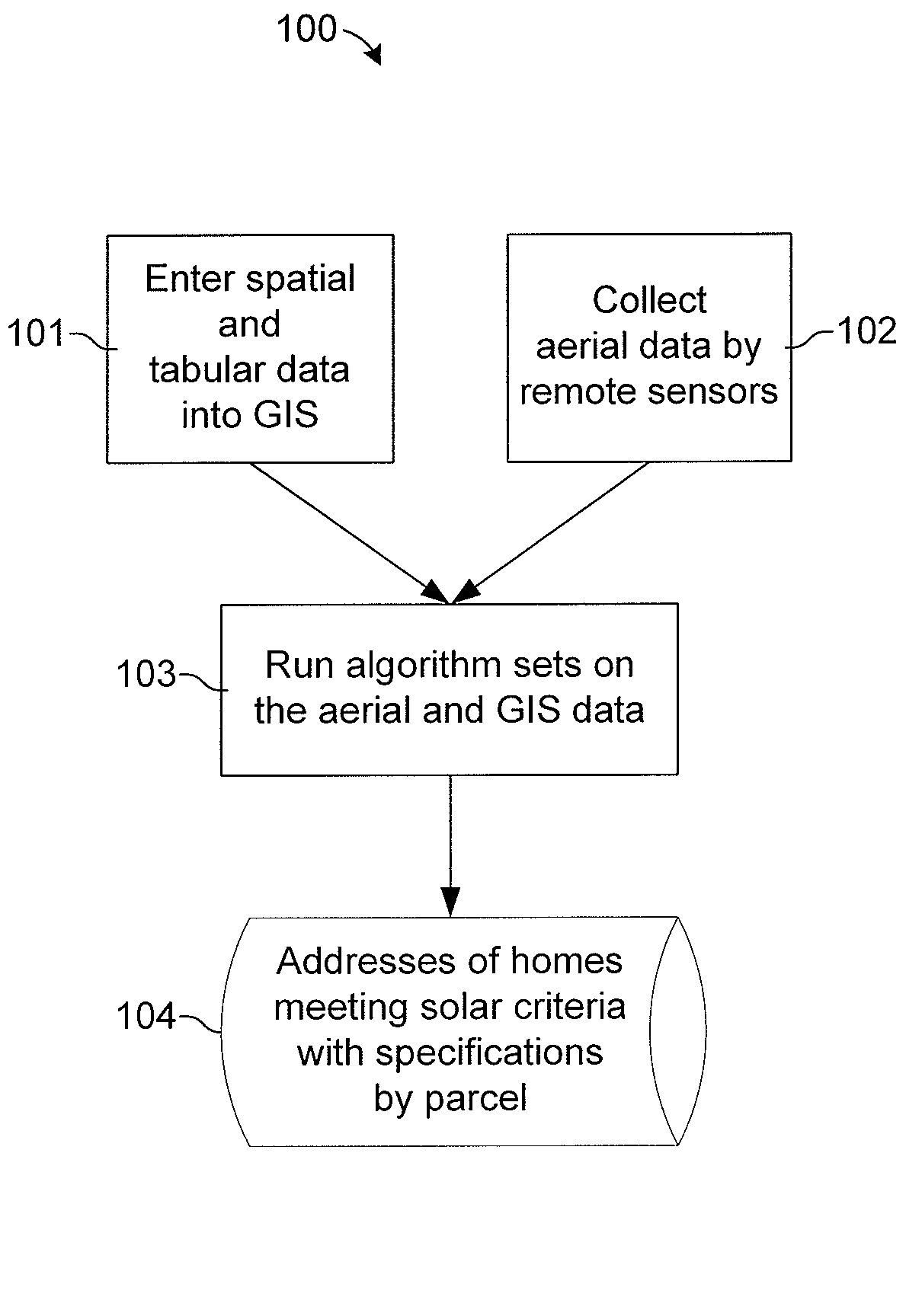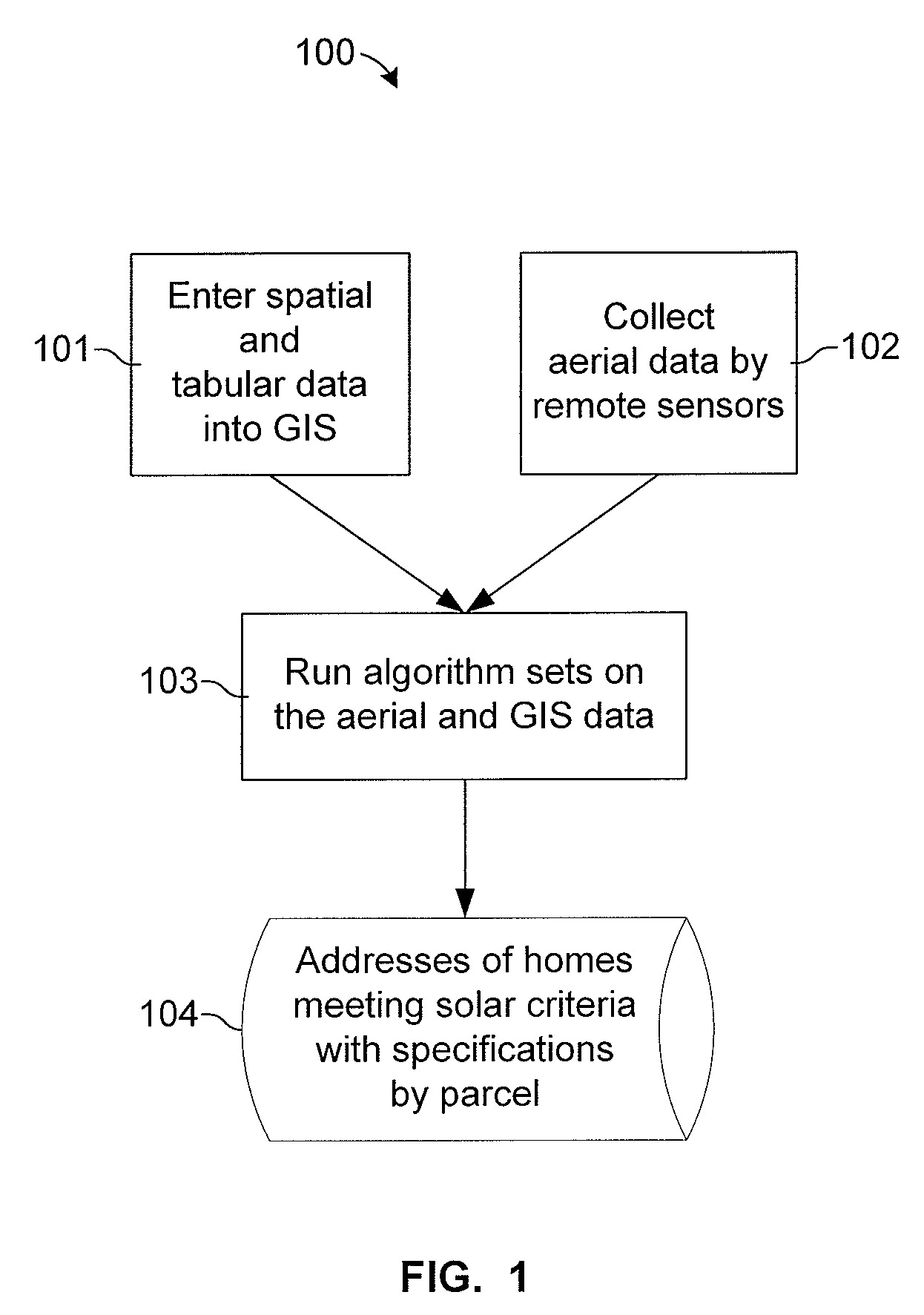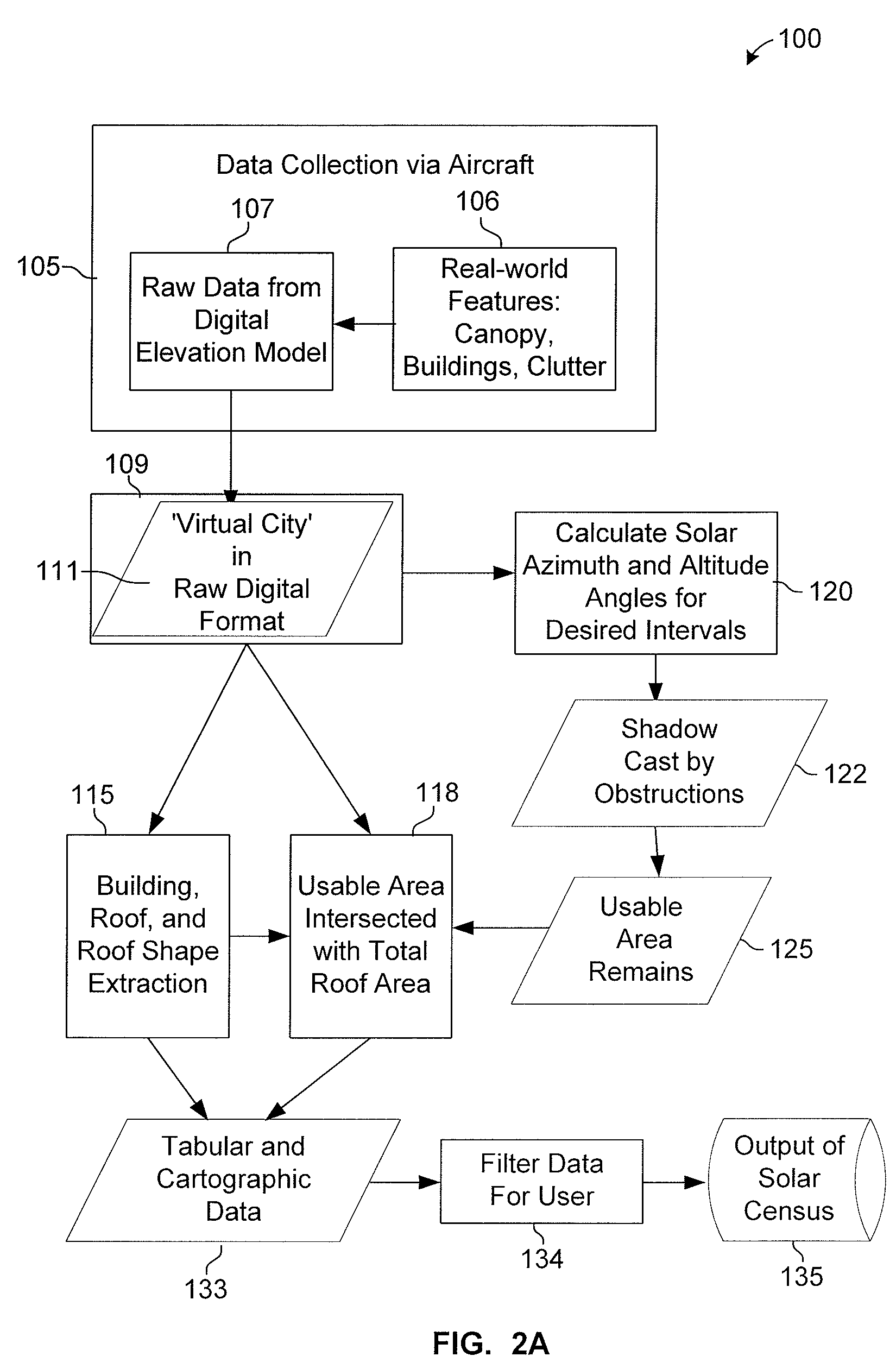System and method for identifying the solar potential of rooftops
a technology of solar power potential and system and method, which is applied in the safety of solar heat collectors, instruments, lighting and heating apparatus, etc., can solve the problems of inability to fully realize the investment potential, the time-consuming and relatively expensive process, and the manual evaluation method of profiling the solar power potential of a hous
- Summary
- Abstract
- Description
- Claims
- Application Information
AI Technical Summary
Benefits of technology
Problems solved by technology
Method used
Image
Examples
Embodiment Construction
[0018]FIG. 1 is a flowchart showing a high-level exemplary embodiment of the present system and method. The present GIS-based technology and associated algorithms deliver an output (a ‘solar census’) of specific addresses in both cartographic and tabular form that reveal the houses (or other buildings) found to match the defined parameters set by the user. The information delivered also contains the specific data for solar potential for every dwelling within the coverage.
[0019]As shown in FIG. 1, at step 101, public and commercial spatial and tabular data are entered into a geographic information system (‘GIS’). The present system analyzes the solar potential of houses and other buildings based on variable parameters including some or all of the following specifications and other data:[0020]Roof space[0021]Roof direction[0022]Roof slope[0023]Address and demographic profiles[0024]Lack of tree cover (annual shadow patterns over rooftops)
[0025]Listed below are examples of public / commer...
PUM
 Login to View More
Login to View More Abstract
Description
Claims
Application Information
 Login to View More
Login to View More - R&D
- Intellectual Property
- Life Sciences
- Materials
- Tech Scout
- Unparalleled Data Quality
- Higher Quality Content
- 60% Fewer Hallucinations
Browse by: Latest US Patents, China's latest patents, Technical Efficacy Thesaurus, Application Domain, Technology Topic, Popular Technical Reports.
© 2025 PatSnap. All rights reserved.Legal|Privacy policy|Modern Slavery Act Transparency Statement|Sitemap|About US| Contact US: help@patsnap.com



